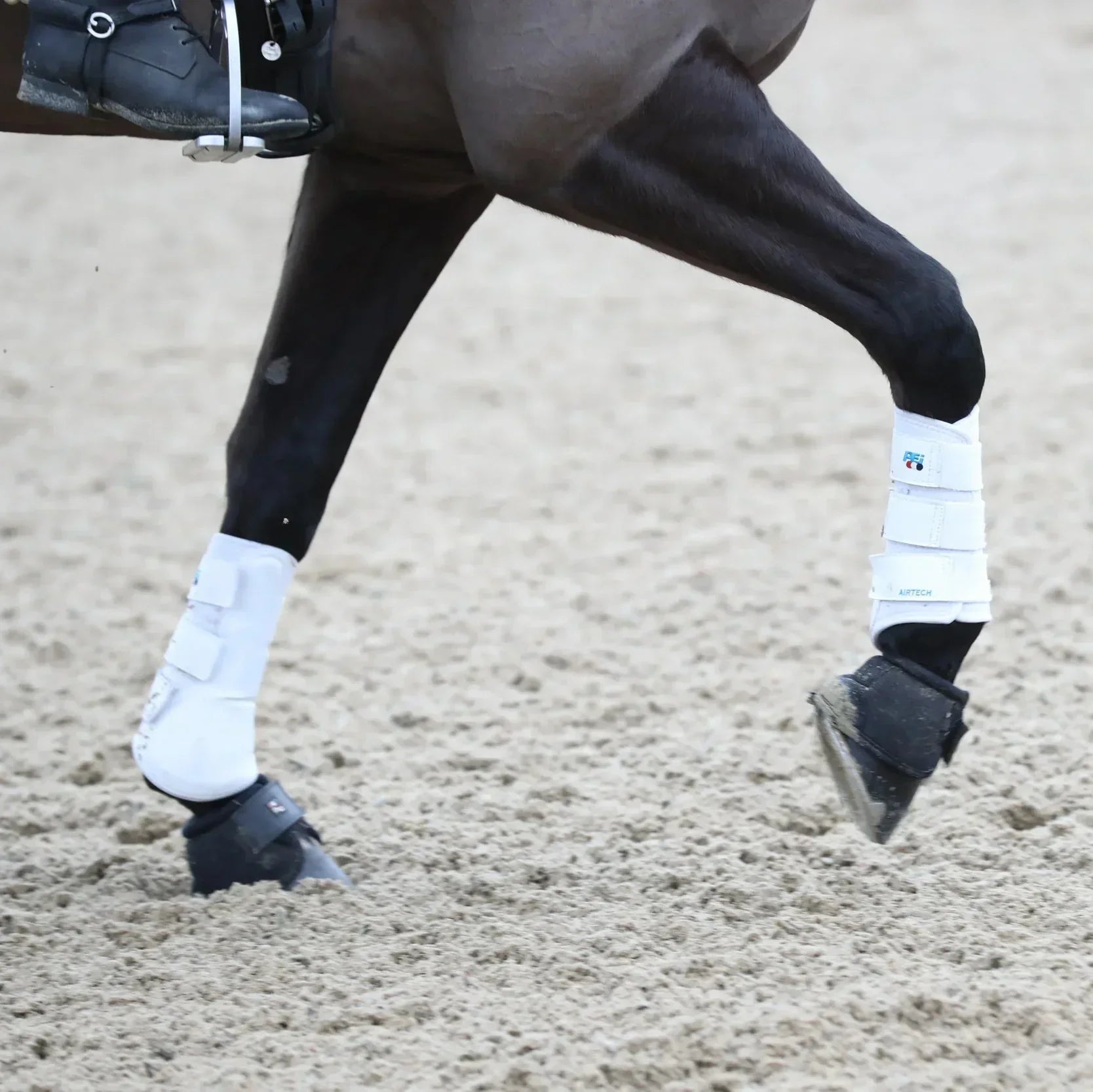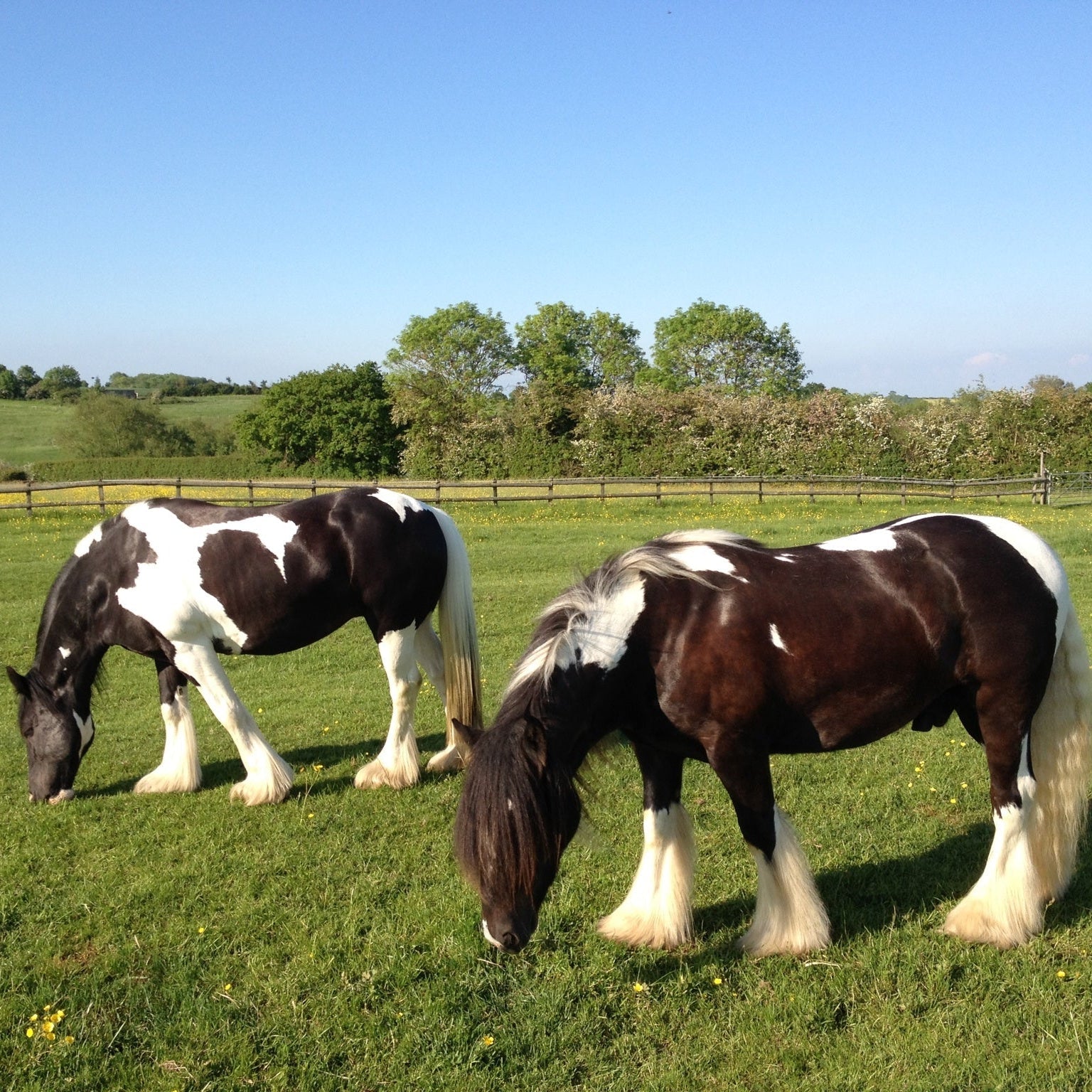Managing the new season growth as part of the equine diet - Spring Grass Growth
We sometimes hear a common misunderstand that winter grazing doesn’t contribute anything nutritionally. That is only partly true, and whilst that can be the case, particularly in highly stocked paddoks, for many we still need to be aware of grazing intake all year round. However, what is definitely true is that spring heralds a completely new era of significant grass growth. Once the soil temperature reaches 5oC at 10cm depth grass germination gets underway. For legumes, such as clovers, that growth starts at 8oC, and the whole field is at optimal growth once the soil is around 10oC. Spring grass is fast growing with high sugar levels and good protein.
The winners....
It is no coincidence that spring grass is timed to arrive around the time we expect to hear the patter of tiny hooves. Rich spring grass is ideal for the broodmare to meet the higher requirements of late gestation and lactation, and so support healthy foal growth.
Whether your aim is to compete, and your horse’s training is ramping up for the season ahead, or you are just taking the opportunity to get out on some longer rides, if your horse is exercising more they will appreciate the additional energy and protein of spring grass.
For horses and ponies who have dropped weight over the colder months, spring grass is ideal. Our native breeds evolved to yo-yo diet in this way annually, and it is perfectly natural for them to lose weight over winter and gain in the spring.
.... and losers.
Beware the good do-er, of any breed, who hasn’t lost additional weight over winter. Further weight gain now is not only a risk for metabolic disorders, such as laminitis and EMS, but will also negatively impact performance and stamina for training and competition. Monitor weight regularly, and adjust the diet to suit.
Spring Worries
Be Laminitis Aware
Research shows that laminitis is a risk all year round, but recent weight gain – often unintentional – is recognised as a key trigger. Meaning spring, with its rich grazing, is a risk period and all owners should be vigilant. Whilst we might all be familiar with the classic laminitic stance, of individuals rocked back on their heels, how many of us recognise the subtle signs? Keep an eye out, and discuss with your vet it you suspect any laminitic changes.
Early signs of laminitis
- Difficulty turning
- Short, stilted walk
- Increased hoof temperature
- Weight shifting between feet
Monitor body condition score and ensure good hoof management, including targeted nutritional management for healthy hooves, is advised.
Beware bright frosty mornings!

As Spring continues it is not unusual to still have the occasional bright, sunny, but frosty morning. Whilst beautiful, those managing laminitis prone animals need to take immediate preventative action. On a sunny frosty morning, the sunlight triggers the grass to produce sugars, but as it is not warm enough for those sugars to convert to grass growth, they instead accumulate within the grass. A potentially dangerous situation for those prone to laminitis.
Ideally keep the animals off the frosted grass until the frost has melted and the sun has been out for a while. If this isn’t possible, ensure they are offered alternative, suitable forage – such as hay – in the field, and monitor closely.
Free Fecal Water Syndrome (FFWS)
FFWS occurs when horses pass normal droppings alongside very watery feces from the anus, which can be both unsightly and cause irritating discomfort for the horse. Research is still in the early stages, with many factors possibly impacting. However spring is recognised as a more risky time of year, and it may well be linked to the high water content of spring grass.
Supplementing with probiotic complexes, including herbal dietary fibres, is advised to maintain stability in the microbiome. Swapping from haylage to hay can also be useful.
Atypical Myopathy
If you have Sycamore trees on, or near, your pasture now is the time to watch out for seedlings as they start to grow, as they can be attractive to grazing horses and ponies. Monitor closely. Remove any seedlings by pulling them up, and dispose of them well away from horses.
Research advises supplementing with quality Vitamin E and selenium, as this is linked to better outcomes. However, there is no prevention other than avoiding ingestion. If you are concerned that your horse may have grazed on seedlings, or are showing any physical signs, do contact your vet immediately.
Signs of Atypical Myopathy
- Weakness, difficulty walking
- Heart & breathing problems
- Depression & lethargy
- Muscle tremors
- Looks like colic, but with a good appetite
- Dark, red, brown urine
Balancing pasture intake
Worries aside, many of us see the emergence of spring grass as a dietary saver. ‘Dr Green’ is back in the paddock. But what might be missing? A number of nutrients are routinely deficient in our soils, and so deficient in grazing and forage. A lack of biodiversity in modern grassland only exaggerates the issues.
Soil deficiencies common in the UK and across Europe include zinc and selenium, both important for muscle health; copper, linked to joint repair and skin condition, and magnesium for muscle and nerve health. Supplementing with a broad-spectrum vitamin and trace element supplement to balance the diet is recommended. For hardworking horses in training look for a concentrated balancer to maintain body condition against the rigours of training and travel.
Too much of a good thing?
The increased energy of spring grass can cause unwanted, and potentially dangerous, weight gain in all horses and ponies. Use a weigh tape regularly, once a week or once a fortnight is ideal. Although tapes can be inaccurate, if the same person uses the same tape then they will show up any change, which can be difficult to spot when you see your horse every day.
If you need to control their grazing intake, look at some of these alternatives.
Grazing muzzle. Make sure they are happy to wear it, and can still eat and drink with it on. Do not leave on permanently, but they can be a really useful way of allowing plenty of turnout whilst controlling intake.
Track system. Sometimes called ‘Paddock paradise’. If you have the resources and freedom to put this in place it can be a great, natural, approach to healthy weight maintenance.
Night turnout. Stabling horses during the day with night time turnout can be useful, as they naturally graze less at night, and sugars in the grass are typically lower – though this is weather dependent.
As Spring turns to Summer, dependent on the weather, we should see that Spring flush of rich grazing gradually decreasing, but remember to always monitor health and body condition of horses and ponies at grass.
Selected References
- Fabius L.S & Westermann C.M (2017) Evidence-based therapy for atypical myopathy in horses. Equine Veterinary Education. 30(11) 616-622
- Pollard D, Wylie CE, Verheyen KLP, Newton JR. Identification of modifiable factors associated with owner-reported equine laminitis in Britain using a web-based cohort study approach. BMC Vet Res. 2019 Feb 12;15(1):59.
- White PJ, Brown PH. Plant nutrition for sustainable development and global health. Ann Bot. 2010 Jun;105(7):1073-80
Written by
Kate Hore, Head Nutritionist. RNutr (Animal), R.Anim.Technol (Cert), BSc(Hons). – Find out more about Kate and out Technical Team HERE.



